Prices in AUD. Shipping worldwide. Flat rate $8 postage per order within Australia. International by weight calculated at checkout. Read full terms.
-
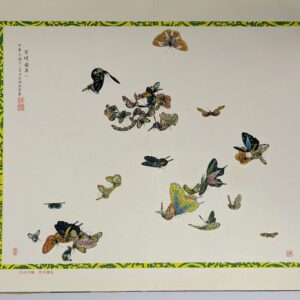

Painting Collection of Mrs. S. K. Ling
AU$250.00 Read MoreAdd to cartS. K. Ling
Kowloon: C. S. Ling, 1935.Foreword and epilogue is in English and Chinese, primarily illustrations. 32 colour plates and one colour photograph of Mrs. S. K. Ling.
-
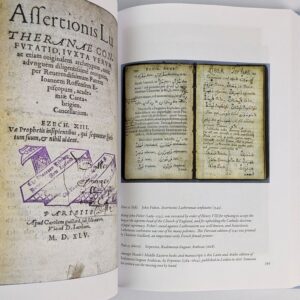
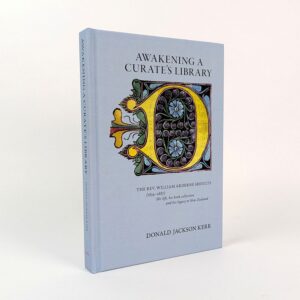
Awakening a Curate’s Library: The Rev. William Arderne Shoults (1839-1887): His Life, His Book Collection, and his Legacy to New Zealand
AU$65.00 Read MoreAdd to cartDonald Jackson Kerr
: The Bibliographical Society of Australia and New Zealand, 2022.“This book is the first to provide an account of the life of Rev. William Arderne Shoults (1839-1887) and his book collecting. It is also the first detailed examination of a true survivor, his book collection of some 5600 items, including medieval manuscripts, incunables, books on ecclesiastical history and primitive church rites and rituals, philology, bibliography, science, travel, and Arabic and Persian texts. The contents cover Shoults’s early years at St. John’s College, Cambridge University, his work in some of the poorer ritualistic parishes of London, his association with the Rev. Joseph Leycester Lyne (1837-1908), the controversial, enthusiastic, revivalist known as ‘Father Ignatius’, his work on Latin hymns, his marriage, and his travel overseas, which included visiting the Vatican Library. After Shoults’s death at 48, his collection was gifted to Selwyn College, Dunedin, arriving in New Zealand in 1893. The survival of this collection is remarkable and it exists as a fine example of what a nineteenth-century curate could collect.” (publisher’s blurb)
-
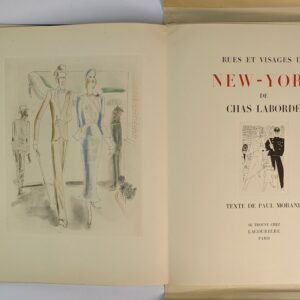
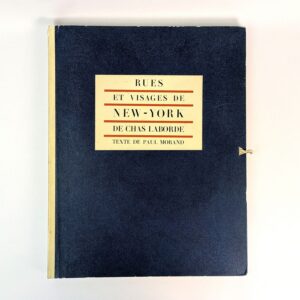
Rues et Visages de New-York
AU$2,200.00 Read MoreAdd to cartChas Laborde; Paul Morand
Paris: Lacouriere, 1950.Streets and Faces of New York. The final, and posthumous, of Charles Laborde’s series of works on famous world cities, having previously produced similar volumes on Paris (1926), London (1928), Berlin (1930), and Moscow (1935). The New York volume produced from sketchbooks he made on his trip in 1932, containing 15 accompanied by text by Paul Morand. One of 200 numbered copies on Arches from a total edition of 230.
-
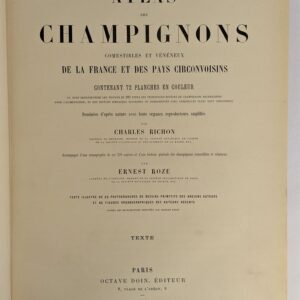
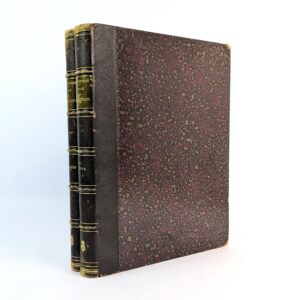
Atlas des Champignons Comestibles et Veneneux de la France et des pays Circonvoisins
AU$2,500.00 Read MoreAdd to cartCharles Richon; Ernest Roze
Paris: Octave Doin, 1888.Atlas of edible and poisonous mushrooms of France and surrounding countries containing 72 color plates or figures of 229 types of the main species of mushrooms sought for food, and similar suspect or dangerous species with which they are confused drawn from nature with their reproductive organs amplified by Charles Richon… Accompanied by a monograph of these 229 species and a general history of edible and poisonous mushrooms by Ernest Roze… Text illustrated with 62 photoengravings of primitive drawings by old authors and organographic figures by recent authors after reproductions made by Charles Rolet. Key late 19th century work of French mycology. VOLBRACHT 1753. BITTING pg. 398. This copy with the bookplate of French mycologist Raymond Bertault.
-
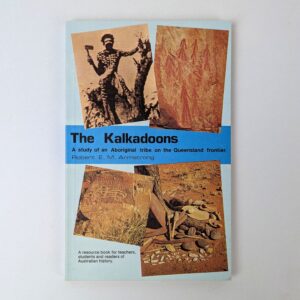
The Kalkadoons: A Study of an Aboriginal Tribe on the Queensland Frontier
AU$250.00 Read MoreAdd to cartRobert E. M. Armstrong
Brisbane: William Brooks, No date.A resource book for teachers, students and readers of Australian history. “The Kalkadoon (Kalkatungu) are descendants of an Indigenous Australian tribe living in the Mount Isa region of Queensland. Their forefather tribe has been called the Elite of the Aboriginal warriors of Queensland. In 1884 they were massacred at Battle Mountain by settlers and police.” (from Kalkadoon PBC website) This book shows that the Kalkadoon did not submissively accept the takeover of their land.
-
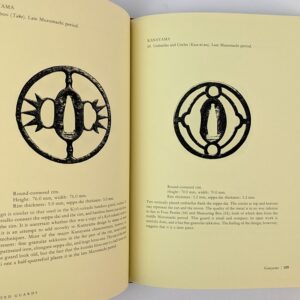
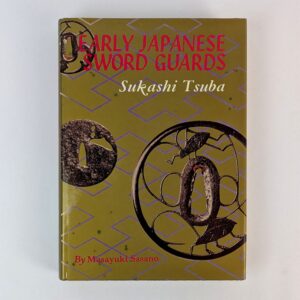
Early Japanese Sword Guards: Sukashi Tsuba
AU$300.00 Read MoreAdd to cartMasayuki Sasano
Tokyo and San Francisco: Japan Publications, 1972. -
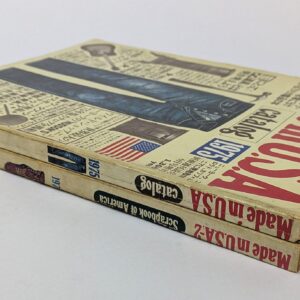
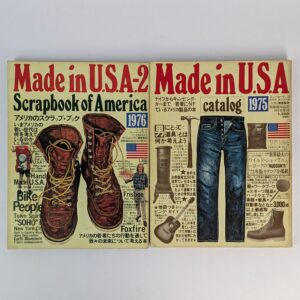
Made in U.S.A. Catalog, 1975 and Made in U.S.A.-2 Scrapbook of America, 1976 (2 Volumes)
AU$550.00 Read MoreAdd to cartYoshihisa Kinameri; Jiro Ishikawa
Tokyo: Yomiuri Shimbun, 1975.Two catalogues of American fashion, culture, tools, and lifestyle products, an earlier project from the founders of Popeye magazine, who travelled the United States to put together these volumes which became a massive driver of American lifestyle and fashion influence in Japanese culture. Today, they remain a detailed catalogue of 1970s American culture. Both volumes include detailed shopping guides to numerous American cities. Unrecorded in OCLC or CiNii,
-
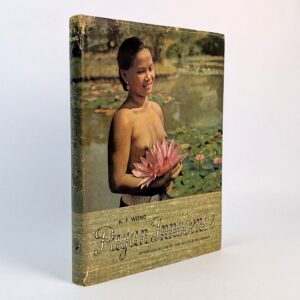
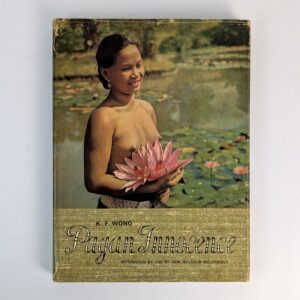
Pagan Innocence
AU$200.00 Read MoreAdd to cartK. F. Wong
London: Jonathan Cape, 1960.Photobook of Sarawak’s indigenous peoples, the Dayak, taken in the late 1950s and published in London in 1960. 30 pages of text with an introduction by Malcolm MacDonald.
-
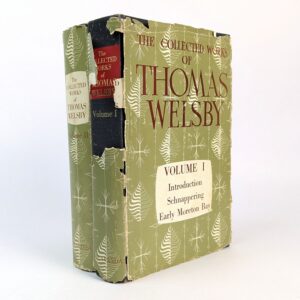
The Collected Works of Thomas Welsby
AU$150.00 Read MoreAdd to cartA. K. Thomson; Thomas Welsby
Brisbane: The Jacaranda Press, 1967. -
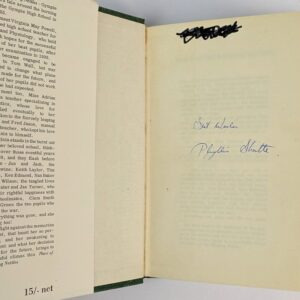

Place of the Stinging Nettles
AU$150.00 Read MoreAdd to cartPhyllis Shatte
Ilfracombe: Arthur H. Stockwell, 1970.A novel of Gympie, Queensland. This copy signed by the author.
-

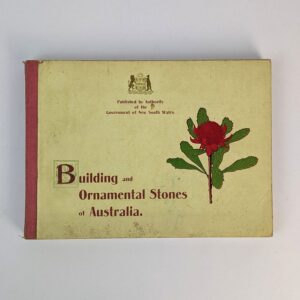
Building and Ornamental Stones of Australia
AU$100.00 Read MoreAdd to cartR. T. Baker
Sydney: Technological Museum, 1915.Technical Education Series, No. 20. Technological Museum, Sydney.
-
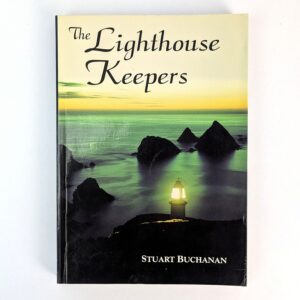
The Lighthouse Keepers
AU$30.00 Read MoreAdd to cartStuart Buchanan
Samford: Coral Coast Publications, 2000. -
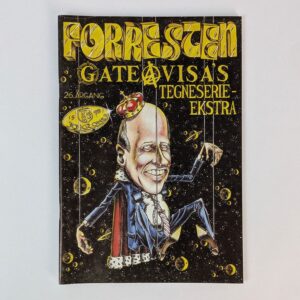
Gateavisa Nr. 154, Vintern 1996
AU$50.00 Read MoreAdd to cartGateavisa
Oslo: Futrum Forlag, 1996.Single issue of Norwegian anarchist and counterculture newspaper Gateavisa. First published in 1970 and through various forms and publishing schedules still being produced today. With an anti-authoritarian focus Gateavisa covered a wide range of topics, from occultism and mysticism to politics and philosophy, and of course underground comics. Gateavisa often featured stories on sex and drugs, and was an early supporter in an otherwise conservative Norway of LGBTQ rights and the legalisation of cannabis. Other regular columns ran on squatting, police violence, prisons, organic farming, pirate radios, punk, and more. This a special comics issue.
-
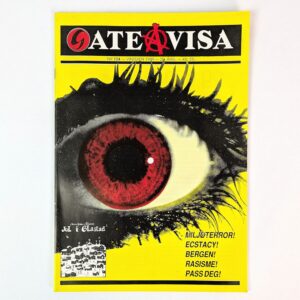
Gateavisa Nr. 124, Vintern 1989
AU$50.00 Read MoreAdd to cartGateavisa
Oslo: Futrum Forlag, 1989.Single issue of Norwegian anarchist and counterculture newspaper Gateavisa. First published in 1970 and through various forms and publishing schedules still being produced today. With an anti-authoritarian focus Gateavisa covered a wide range of topics, from occultism and mysticism to politics and philosophy, and of course underground comics. Gateavisa often featured stories on sex and drugs, and was an early supporter in an otherwise conservative Norway of LGBTQ rights and the legalisation of cannabis. Other regular columns ran on squatting, police violence, prisons, organic farming, pirate radios, punk, and more. This issue with a feature story on MDMA.
-
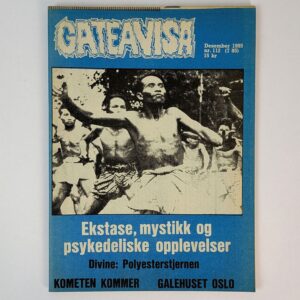
Gateavisa Nr. 112, December 1985
AU$50.00 Read MoreAdd to cartGateavisa
Oslo: Futrum Forlag, 1985.Single issue of Norwegian anarchist and counterculture newspaper Gateavisa. First published in 1970 and through various forms and publishing schedules still being produced today. With an anti-authoritarian focus Gateavisa covered a wide range of topics, from occultism and mysticism to politics and philosophy, and of course underground comics. Gateavisa often featured stories on sex and drugs, and was an early supporter in an otherwise conservative Norway of LGBTQ rights and the legalisation of cannabis. Other regular columns ran on squatting, police violence, prisons, organic farming, pirate radios, punk, and more. This issue with a cover story on psychedelic experiences in traditional cultures.
-
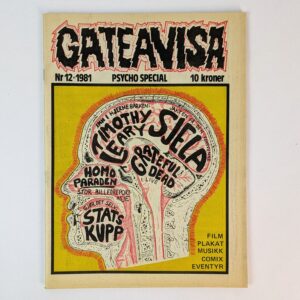
Gateavisa Nr. 12, 1981
AU$60.00 Read MoreAdd to cartGateavisa
Oslo: Futrum Forlag, 1981.Single issue of Norwegian anarchist and counterculture newspaper Gateavisa. First published in 1970 and through various forms and publishing schedules still being produced today. With an anti-authoritarian focus Gateavisa covered a wide range of topics, from occultism and mysticism to politics and philosophy, and of course underground comics. Gateavisa often featured stories on sex and drugs, and was an early supporter in an otherwise conservative Norway of LGBTQ rights and the legalisation of cannabis. Other regular columns ran on squatting, police violence, prisons, organic farming, pirate radios, punk, and more. This, the Psycho Special Issue with a feature story on Timothy Leary.
-
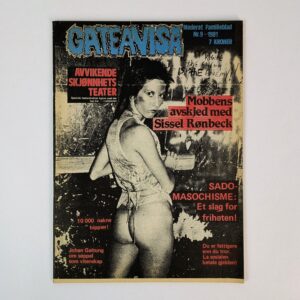
Gateavisa Nr. 9, 1981
AU$50.00 Read MoreAdd to cartGateavisa
Oslo: Futrum Forlag, 1981.Single issue of Norwegian anarchist and counterculture newspaper Gateavisa. First published in 1970 and through various forms and publishing schedules still being produced today. With an anti-authoritarian focus Gateavisa covered a wide range of topics, from occultism and mysticism to politics and philosophy, and of course underground comics. Gateavisa often featured stories on sex and drugs, and was an early supporter in an otherwise conservative Norway of LGBTQ rights and the legalisation of cannabis. Other regular columns ran on squatting, police violence, prisons, organic farming, pirate radios, punk, and more. This issue with feature stories on sado-masochism and lesbian SM.
-
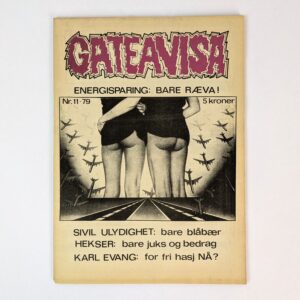
Gateavisa Nr. 11, 1979
AU$50.00 Read MoreAdd to cartGateavisa
Oslo: Futrum Forlag, 1979.Single issue of Norwegian anarchist and counterculture newspaper Gateavisa. First published in 1970 and through various forms and publishing schedules still being produced today. With an anti-authoritarian focus Gateavisa covered a wide range of topics, from occultism and mysticism to politics and philosophy, and of course underground comics. Gateavisa often featured stories on sex and drugs, and was an early supporter in an otherwise conservative Norway of LGBTQ rights and the legalisation of cannabis. Other regular columns ran on squatting, police violence, prisons, organic farming, pirate radios, punk, and more. This issue with a feature story on Sten Larris’ Forbyde Hallucinogener [Forbidden Hallucinogens].
-
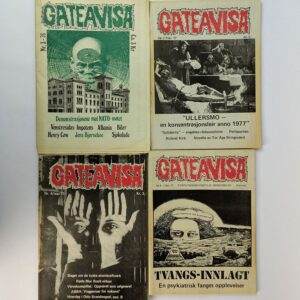
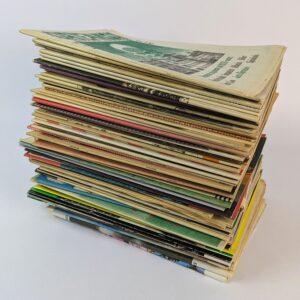
Gateavisa (69 Issues, 1976-1992)
AU$1,500.00 Read MoreAdd to cartGateavisa
Oslo: Futrum Forlag, 1976-1992.Broken run of 69 issues of Norwegian anarchist and counterculture newspaper Gateavisa. First published in 1970 and through various forms and publishing schedules still being produced today. With an anti-authoritarian focus Gateavisa covered a wide range of topics, from occultism and mysticism to politics and philosophy, and of course underground comics. Gateavisa often featured stories on sex and drugs, and was an early supporter in an otherwise conservative Norway of LGBTQ rights and the legalisation of cannabis. Other regular columns ran on squatting, police violence, prisons, organic farming, pirate radios, punk, and more. This run (from March 1976 to March 1992) largely comes from its heyday when it was produced monthly in the late 1970s and early 1980s, though it also shows the editorial changes the magazine went through in the late 1980s and early 1990s.
-


The World of Homosexuals
AU$3,000.00 Read MoreAdd to cartShakuntala Devi
New Delhi: Vikas Publishing House, 1977.Considered the first published academic study of homosexuality in India, though in the introduction Devi states it is “the work of a lay person for lay people”. The World of Homosexuals begins with a lengthy interview with a closeted homosexual and ends with a strong call for decriminalisation of homosexuality, “nothing less than full and complete acceptance will serve–not tolerance and not sympathy. By our attitudes and our actions we must make it possible for homosexuals to come out of hiding, to live their lives secure in their right to be themselves.” Shakuntala Devi (1929-2013) was an Indian mental calculator and writer, popularly known as the ‘Human Computer’ for her Guinness World Record holding speed arithmetic skills. In a documentary Devi claimed that she wrote the book as a result of her marriage to a gay man, though this claim was later refuted by her daughter and son in law, stating that Devi likely just said it as a good selling point, and perhaps also as a petty swipe at her ex-husband. Regardless of intention or spin, the book is an important and scarce source of latter 20th century Indian LGBTQ+ perspectives and history.
